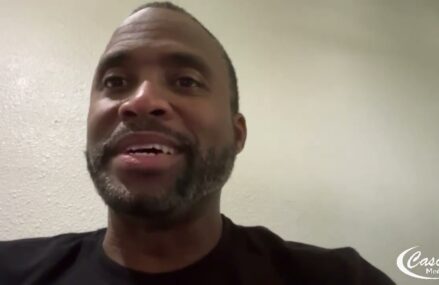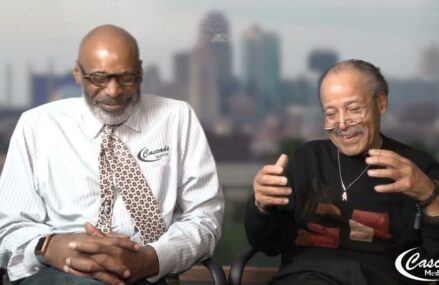
By PHILIP ELLIOTT
FILE – In this July 17, 2013 file photo, House Education Committee Chairman Rep. John Kline, R-Minn., left, followed by House Majority Whip Kevin McCarthy of Calif., walks to the House chamber on Capitol Hill in Washington. A deal that gives college students and their parents lower interest rates for loans is heading toward its final vote. The House was expected Wednesday to take up a bipartisan compromise that links student loan interest rates to the financial markets. Immediately, borrowers would see lower rates for classes this year than last, although the costs are expected to climb in coming years if the economy improves as expected. (AP Photo/J. Scott Applewhite)
WASHINGTON (AP) — A deal that gives college students and their parents lower interest rates for loans is heading toward its final vote.
The House was expected Wednesday to take up a bipartisan compromise that links student loan interest rates to the financial markets. Immediately, most borrowers would see lower rates for classes this year than last, although the costs are expected to climb in coming years if the economy improves as expected.
“This is a victory for students and taxpayers, and I look forward to the bill’s swift passage in the House,” said Rep. John Kline, the Republican chairman of the House Committee on Education and the Workforce.
Undergraduates this fall would borrow at a 3.9 percent interest rate for subsidized and unsubsidized loans. Graduate students would have access to loans at 5.4 percent, and parents would borrow at 6.4 percent. The rates would be locked in for that year’s loan, but each year’s loan could be more expensive than the last. Rates would rise as the economy picks up and it becomes more expensive for the government to borrow money.
But for now, interest payments for tuition, housing and books would be less expensive if the House passes the bill, as expected.
The chamber earlier this year passed legislation that is similar to what the Senate later passed. Both link interest rates to 10-year Treasury notes and remove Congress’ annual role in determining rates.
Negotiators of the Senate compromise were mindful of the House-passed version, as well as the White House preference to shift responsibility for interest rates to the financial markets. The resulting bipartisan bill passed the Senate 81-18.
Republican House Speaker John Boehner has signaled his caucus should support Senate changes to the earlier bill. So, too, has Rep. George Miller of California, the top Democrat on the House education panel.
The House-written student loan bill passed the GOP-led chamber 221-198, largely along party lines. Eight Republicans crossed party lines to vote against it; four Democrats voted in favor of it.
With changes made in the Senate — most notably a cap on how interest rates could climb and locking in interest rates for the life of each year’s loan — Democrats were expected to join Republicans and back the bill.
Interest rates would not top 8.25 percent for undergraduates. Graduate students would not pay rates higher than 9.5 percent, and parents’ rates would top out at 10.5 percent. Using Congressional Budget Office estimates, rates would not reach those limits in the next 10 years.
Even with those protections not all Democrats will back it, cautioned House Democratic leader Nancy Pelosi. She said this “isn’t the bill we would have written, but it is a bill that can pass and will have Democrats voting for and against.”
The White House has endorsed the deal and President Barack Obama is expected to sign the bill into law, despite objections from consumer advocates that the outline could cost future students.
“The bottom line is that students will pay more under this bill than if Congress did nothing, and low rates will soon give way to rates that are even higher than the 6.8 percent rate that Congress is trying to avoid,” said Chris Lindstrom, higher education program director for the consumer group US PIRG.
Rates on new subsidized Stafford loans doubled to 6.8 percent July 1 because Congress could not agree on a way to keep them at 3.4 percent. Without congressional action, rates would stay at 6.8 percent — a reality most lawmakers called unacceptable.
The compromise that came together during the last month would be a good deal for all students through the 2015 academic year. After that, interest rates are expected to climb above where they were when students left campus in the spring, if congressional estimates prove correct.
The White House and its allies said the new loan structure would offer lower rates to 11 million borrowers right away and save the average undergraduate $1,500 in interest charges.
Democratic senators were already talking about changing the deal when they take up a rewrite of the Higher Education Act this fall. As a condition of his support, Senate Health, Education, Labor and Pensions Committee Chairman Tom Harkin won a Government Accountability Office report on the costs of colleges. That document was expected to guide an overhaul of the deal just negotiated.
The Congressional Budget Office estimated the bill as written would reduce the deficit by $715 million over the next decade. During that same time, federal loans would be a $1.4 trillion program.
___



